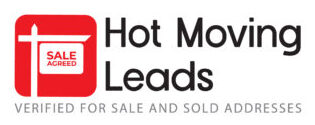
How to Enhance Your Website Security? A Guide for UK Removal Companies
In the digital age, securing your removal company‘s website is not just about bolstering your SEO and marketing efforts; it’s about safeguarding your digital presence against hackers and malware. With the increasing sophistication of cyber threats, the urgency to fortify your website security has never been more critical. Here are nine straightforward strategies to significantly improve your website security, thus protecting your company’s sensitive data from cybercriminals.
Nine Steps to Bolster Website Security
The internet is a goldmine of information, making any website a potential target for hacking or data theft. As such, enhancing your website security is paramount in today’s digital environment.
1. Regular Software Updates
Keeping your software up to date is fundamental to protecting your website. New threats emerge constantly, necessitating continuous updates to your security measures. Whether it’s your server operating system or any software you run on your website, ensure everything is current to close security gaps that could be exploited by hackers.
2. Guard Against SQL Injection
SQL injection is a tactic used to manipulate your database through your website’s form field or URL parameter. To prevent this, use parameterised queries, a straightforward yet effective measure in most web languages, ensuring your database is safe from unauthorised access.
3. Protect Against XSS Attacks
Cross-site scripting (XSS) attacks involve malicious JavaScript infecting your pages, compromising your visitors’ browsers. To enhance your website security, ensure users cannot inject harmful JavaScript content into your web pages.
4. Be Cautious with Error Messages
Limit the information you share through your website’s error messages. Overly detailed messages can provide hackers with clues about your website’s architecture, making it vulnerable to attacks. Stick to minimal, vague error notifications and log the details internally instead.
5. Implement Browser and Server-Side Validation
Perform validation both in the browser and on the server side. While browser validation can catch simple failures, server-side validation adds a deeper layer of security, protecting against malicious code or data insertion.
6. Strengthen Password Policies
Weak passwords are a common entry point for cyberattacks. Encourage the use of strong, complex passwords among your team, and consider implementing regular mandatory updates to further secure your site.
7. Restrict File Uploads
Allowing files to be uploaded to your website can introduce risks, as even innocuous-looking files could contain scripts that open your site to attack. If file uploads are necessary, ensure stringent security measures are in place to check and secure these files.
8. Switch to HTTPS
Using HTTPS ensures a secure connection for your users, encrypting data and protecting it from interception. This is particularly crucial for sites handling sensitive information, reassuring users that their data is secure.
9. Utilise Security Tools for Testing
Finally, after implementing the above measures, utilise security tools to test your website’s vulnerabilities. There’s a plethora of tools available, ranging from free to premium, designed to simulate cyberattacks and identify potential weaknesses in your site’s security.
Securing Your Removal Company’s Digital Future
By adopting these nine measures, UK removal companies can significantly improve their website security, safeguarding their business and their customers’ data against the ever-evolving threat of cyberattacks. In the process of securing your digital assets, partnering with RemovalsPal can provide the necessary guidance and support to ensure your website remains a safe, trustworthy platform for your customers. Remember, website security is an ongoing process, requiring constant vigilance and adaptation to new cyber threats.




